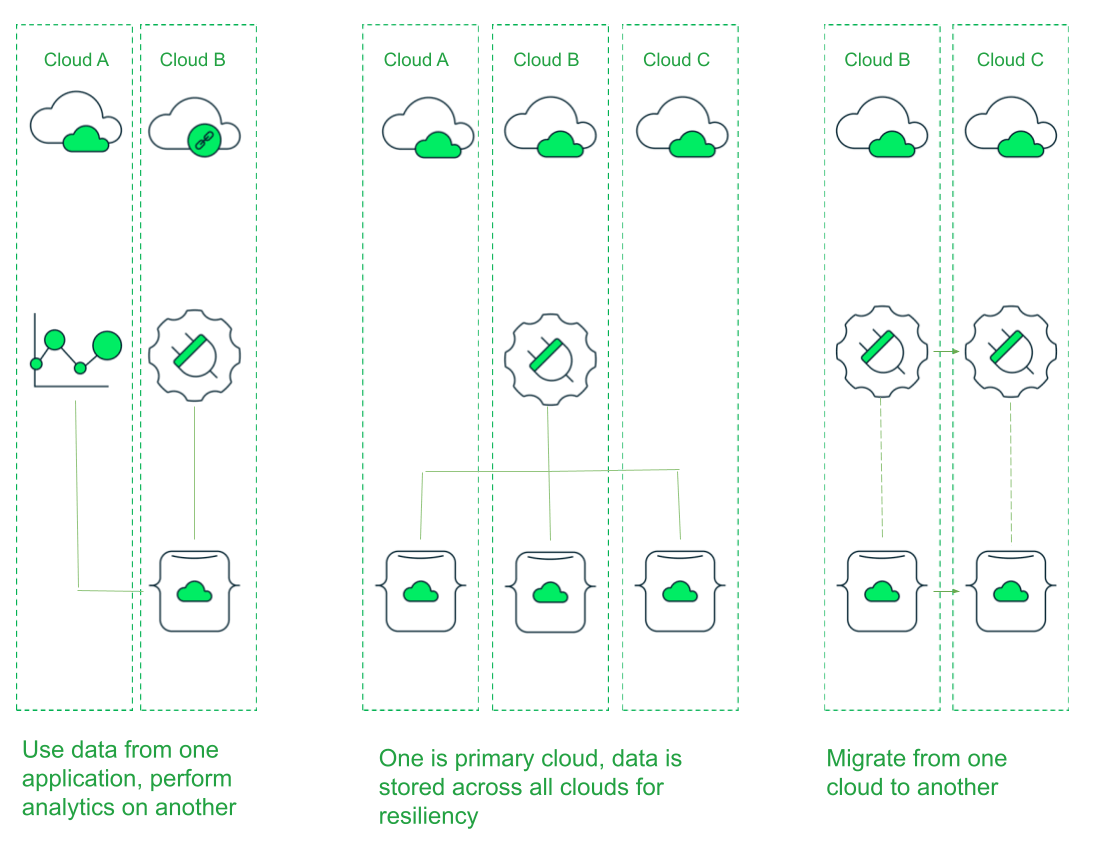
Rack is the interface for most Ruby web frameworks, including Rails and Sinatra. It is very easy to learn and use.
Web servers
Rack makes it easier to communicate between different frameworks and web servers. Rack has made the process simpler by providing an open protocol which any server can use in order to communicate with frameworks following its specification.
App Servers
On a webserver, you can run many different kinds of applications. They range from simple things like a contact form to complex web applications that include database backends and APIs. It can be confusing to understand how these apps are installed and which server type you will need for each.

You should first determine what category the application falls under. This will depend on how you plan to use it. Knowing what category your application falls into can help you avoid headaches later, and will give you a clearer understanding of how software in your environment functions.
Edit Configurations) can be used to create a configuration. Once you create a custom Rack configuration it will automatically be saved. It can then be used for future launches or debugging.
Puma
Puma Web Server was created exclusively for Ruby Rack applications. It was initially inspired by Mongrel, but redesigned to only work with Rack for maximum efficiency.
If you have IO-bound applications and need the highest performance possible on an open-source server then give it a test. You can choose between single-threaded and multi-process modes.

Phusion Passenger
In a "standalone" mode, it can act just like an app server for your Rails apps. You can install it and integrate it into your webserver to run Rack apps directly without needing an app server. This is really helpful if you have a large number of apps that you want to serve, or you have other server-side needs that you'd rather not deal with separately from your Rack apps.
Passenger has the best feature of all: it is easily upgradeable to newer Rails version via container redeployment. It also helps protect your application against Slowloris attacks, which can eat up server resources.
Rack-based servers
Rack-based server's most important feature is that they can be easily upgraded to Ruby 2.1 and its dependencies. They also come with a bundler dependency manager that will automatically track and install the gems that your project requires, making them a very convenient and cost-effective way to deploy your projects.
FAQ
Is WordPress a CMS?
The answer is yes. It's a Content Management System. CMS allows you control your website content using a web browser and not an application like Dreamweaver, Frontpage or Frontpage.
WordPress is completely free! Hosting is included in the price, but you don't need to pay anything else.
WordPress was initially intended to be used as a blog platform. Now, WordPress offers many different options: eCommerce sites, forums. Membership websites. Portfolios.
WordPress is easy to install and set up. You must download the installation file from their website and upload it onto your server. Then, you simply visit your domain name through your web browser and log in to your new site.
After installing WordPress you will need to create a username/password. Once you've logged in, you'll see a dashboard where you can access all of your settings.
You can now add pages, posts and images to your site. You may skip this step if you feel comfortable editing and creating content.
However, if you prefer to work with someone else, you can hire a professional web designer to handle the whole process.
What is a static site?
A static website is a site where all content are stored on a server, and visitors can access it via web browsers.
The term "static” refers the fact that there is no dynamic feature such as changing images or video, animations etc.
This type of site was originally developed for use in corporate intranets but has since been adopted by individuals and small businesses who want simple websites without the complexity of custom programming.
Because static websites require less maintenance, they have grown in popularity. It's easier to update and maintain static sites than a website that has many components (such blogs).
They load also faster than their dynamic counterparts. They are great for people who use mobile devices and have slow Internet connections.
Also, static websites are more secure that dynamic counterparts. It is difficult to hack into static websites. Hackers have limited access to data within a database.
There are two main methods to create static websites:
-
Using a Content Management System (CMS)
-
Create a static HTML website
It all depends on what you need. If you're new to creating websites, I recommend using a CMS.
Why? Because it gives you complete control of your website. With a CMS, you don't need to hire someone to help you set up your site. Upload files directly to the CMS.
You can still learn code and create static sites. It will take some time to learn to program.
What Websites should I make?
This depends on your goals. You may choose to sell products online if you want to build a website. You'll need to build a robust eCommerce site to do this successfully.
Blogs, portfolios, forums, and other types of websites are also popular. Each one of these websites requires different skills. For instance, if you want to set up a blog, you will need to learn about blogging platforms such as WordPress or Blogger.
You will need to decide how to customize your website's look when you select a platform. You can find many free templates and themes for every platform.
Once you have selected a platform you can add content to your website. You can add images, videos, text, links, and other media to your pages.
When you are ready to launch your new website, you can publish it online. Once published, visitors can view your site in their browsers.
Statistics
- Did you know videos can boost organic search traffic to your website by 157%? (wix.com)
- Studies show that 77% of satisfied customers will recommend your business or service to a friend after having a positive experience. (wix.com)
- It's estimated that in 2022, over 2.14 billion people will purchase goods and services online. (wix.com)
- At this point, it's important to note that just because a web trend is current, it doesn't mean it's necessarily right for you.48% of people cite design as the most important factor of a website, (websitebuilderexpert.com)
- When choosing your website color scheme, a general rule is to limit yourself to three shades: one primary color (60% of the mix), one secondary color (30%), and one accent color (10%). (wix.com)
External Links
How To
How can I start as a UI Designer
There are two routes to becoming a UI Designer:
-
You can get a degree from school in UI Design.
-
It is possible to start a freelance career.
To be able to enter school, it is necessary to attend college/university and complete four years. This covers art, business, psychology, and computer science.
Classes can be taken at either state or community universities. Some schools offer tuition-free programs while others charge tuition.
After graduating, you'll need to find employment. If you choose to work for yourself, you must build your client base. Networking with other professionals is important so that they know you are there.
You can also look for opportunities to intern at companies that specialize in developing web applications. Many companies hire interns in order to gain valuable experience before they hire full-time employees.
A portfolio will help you get more work once you have established it. Your portfolio should contain your work samples and details of the projects you worked on.
It is a smart idea to send potential employers your portfolio via email.
Market yourself as a freelancer. Advertise your services on job boards such as Indeed, Guru, Guru, and Upwork.
Freelancers frequently receive assignments from recruiters who post jobs online. These recruiters look for qualified candidates to fill specific positions.
These recruiters will typically give the candidate a project brief that outlines the position's requirements.
Freelancers are not required by law to sign any long-term agreements. It is best to negotiate an upfront fee if you intend to move forward.
Many designers prefer working directly with clients, rather than through agencies. Although this may seem appealing, many people lack necessary skills.
Agency workers usually have extensive knowledge about the industry they are working in. They can also access specialized training and resources that will allow them to produce top-quality work.
Agency workers also receive higher hourly rates.
The downside to working with an agency is that you won't have direct contact with the employer.
Being a successful UI designer requires you to be self-motivated, creative.
Excellent communication skills are also required.
UI designers design websites by designing user interfaces (UI), and visual elements.
They are also responsible for ensuring that the site meets the needs of its users.
This requires understanding what information visitors want and how the website should function.
Wireframes are created by UI designers using a variety of tools. They use wireframing to help them visualize the layout of a webpage before they start designing.
Wireframe templates are available online, making it easy for anyone to create their own wireframes.
Some designers concentrate on UI design only, while others mix UI design with graphics design.
Photoshop is a popular software used by graphic designers for editing images.
Adobe InDesign is then used to layout pages and layouts.
Photographers capture images using digital cameras or DSLRs.
The photos are then uploaded to a photo editing software where text captions, filters and other effects can be added.
The photographer saves the image as a compatible file format for the website.
It is important to take into consideration all aspects of the design process when building a website.
This includes research, planning, wireframing, prototyping, testing, coding, content creation, and publishing.
Research - Before you start a new project, it's important to do thorough research.
Planning - Once your research is complete, you can begin to create a plan.
Wireframing – A wireframe is a preliminary sketch or drawing of a webpage or application.
Prototyping-Prototypes ensure that the final product matches your initial vision.
Testing – The prototype should go through multiple rounds to be tested in order for it to work properly.
Coding: Coding is the process of writing code for computers.
Content Creation – This covers everything from creating copy to managing social accounts.
Publishing involves uploading files to a server, and making sure the site is accessible.
You will be required to study about other projects in order to work as a freelance UX/UI design.
Some companies require only wire frames, others require complete prototypes.
You may be required to perform specific tasks depending on the project you accept.
For example, if you're hired to create wireframes, you might be expected to create several wireframes over time.
If you're required to build a complete prototype of a website, you may also be required to design a fully functional version.
It doesn't matter what kind of project it is, strong interpersonal skills are essential.
You need to build strong relationships with potential employers as freelancers are hired primarily through referrals.
Furthermore, you should be able and able to communicate both verbally AND in writing.
A portfolio is an essential part any freelancer's arsenal.
It is a showcase of your work and a demonstration of your ability produce high-quality outputs.
Online portfolios can help you do this.
The best way to get started is to find websites similar to yours.
Search these websites to view the details of each site.
Once you identify what you think are the best practices, go ahead and adopt them.
It's also useful to include links from your portfolio in your resume.